What Do Swans Eat In The Wild And At Home?
Camilo WalkerSwans are waterfowl of the duck family of the goose family. They cannot dive, so they forage for food in shallow water. Their diet is dominated by aquatic plants, worms, crustaceans, and mollusks. What swans eat depends on their habitat and the time of year. An adult bird eats 3-4.5 kg of food per day.
What do swans eat in the wild?
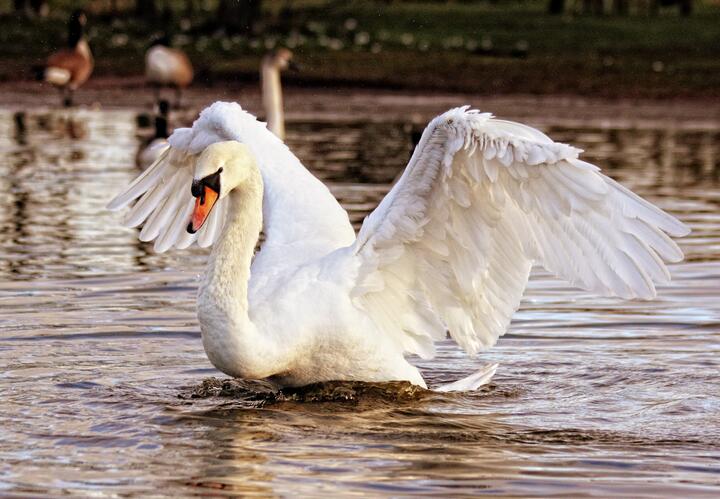 Photo by Anthony : ) on pexels
Photo by Anthony : ) on pexelsSwans are strong and hardy. Their torso structure and well-developed muscles allow them to swim well.
To get food, the bird dips its neck into the water to the depth of one meter and catches with its beak everything in the water, in the mud at the bottom of shallows, or near the shore.
Having grasped the food, it lets the water flow away and separates edible substances with its sensitive tongue. This is how the swan gets most of its food.
In the wild, swans eat the following types of food:
•aquatic vegetation (algae);
•insects and their larvae;
•barnacles;
•small fish and amphibians.
Swans pluck leaves from willow branches down to the water and coastal grass. They like to eat grain crops in the fields: wheat, corn, bread grains.
What do swans eat in the wild in winter?
Swans easily tolerate the cold. When it’s freezing, they hardly move, tucking their paws under their bodies, or move very slowly so as not to expend energy.
When bodies of water in the northwest are covered with ice, birds move to ice-free southern lakes and seashores, where they feed until the following spring.
In winter, the whooper swans, trumpeter swans, and other species fly around fields in search of food, eating the remains of grass and cereal crops from them.
Ornithologists say that healthy swans should be fed only when the temperature drops to minus 15° in winter.
What can a person feed swans?
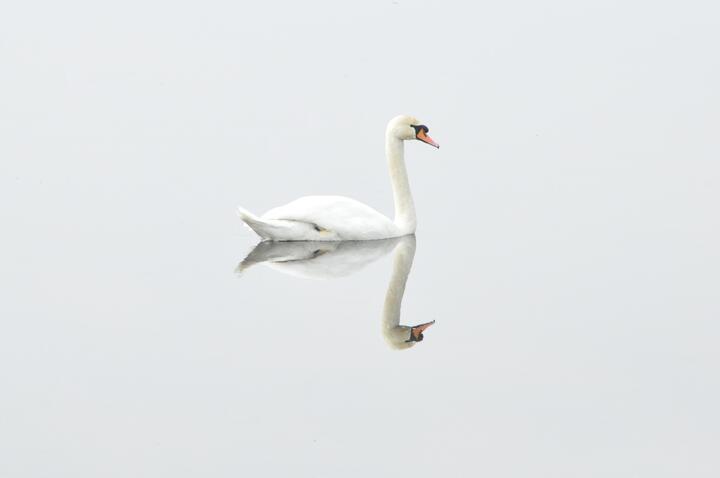 Photo by Pixabay on pexels
Photo by Pixabay on pexelsIn the swans’ natural habitat, it is better not to feed swans at all. They get used to “bread places” and do not want to get their own food.
With the onset of cold weather birds suffers, they can’t orientate themselves and fly away in search of unfrozen reservoirs. As a result, they become ill and may die.
A person who feeds birds should know what the swan eats, and follow the following rules:
1.Do not give them black bread, it is poorly digested and can lead to gastrointestinal diseases.
2.White bread can be fed to birds in small quantities.
3.You should not feed spoiled food to birds – it is deadly!
4.In cold weather, it is useful to give swans shredded raw or half-cooked vegetables, steamed rice, and millet.
5.In frosty weather, a grain mixture or mixed fodder without salt would be ideal.
The digestive organs of these birds are designed so that they need to wash down food with water, so feed should be thrown into the water or on the edge of the shore.
What do swans eat at home?
Swans feed both during the day and at night. The whooper, trumpeter, and tundra species can eat food weighing up to 25% of their own weight in a day.
In captivity, swans get used to a varied diet of mostly plant food. They quickly become accustomed to people, trust them and eat everything they present.
Food troughs should be placed on the shore or directly on the water or ice. They are filled with bird feed and other dry food.
Swan breeders need to know what they eat. The standard menu for domesticated birds includes:
•Cereals: oats, millet, barley, wheat;
•bread;
•finely chopped vegetables: carrots, cabbage, boiled potatoes;
•greens-slices.
The food is put into a basin of clean water, near which a place for lying down is arranged. For this purpose, bedding 30-40 cm high is laid, which also serves as additional food for swans.
With a sudden change of temperature, illness, death of a life partner, swans need to be fed with special attention. It is necessary to add vitamins and mineral supplements to the usual diet.
Birds are not fastidious, instead of water they gladly drink milk, and eggs and meat waste will quite replace animal food that a swan could find on its own in nature.
During the cold season, from October to May, zoos include 0.5% yeast in the diet of swans.
In captivity, young swans are given millet gruel, hard-boiled eggs, minced fish, and meat.
What do swans eat?
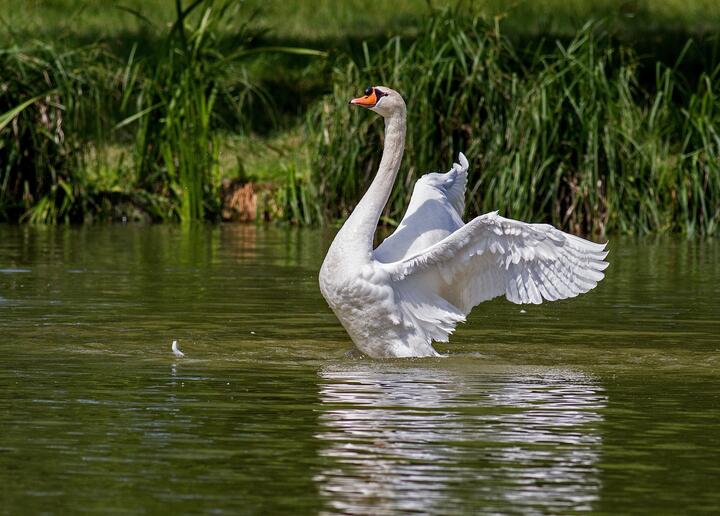 Photo by Pixabay on pexels
Photo by Pixabay on pexelsWhen feeding wild birds, it is important to provide foods close to their natural diet. In most cases, swans are content to eat grasses and waterweeds. Providing these foods will help them grow and develop into healthy birds. You can also provide greens, including lettuce and kale, which swans enjoy eating. In addition to grasses and waterweeds, you can provide swans with grains.
Swans are highly adapted to water and need to drink a lot of water to flush out the food that they eat. They feed at night and during the day, and they can eat up to 25% of their body weight every day. When they are kept in captivity, they eat mostly plant food, though they will graze on grassy areas around the lagoon in spring and summer. During this time, they also eat insects and small mammals that they encounter while foraging.
Swans are omnivorous animals and will eat all types of foods. In addition to vegetarian fare, swans will also eat small aquatic animals, including fish and other small mammals. However, while swans prefer vegetarian diets, they can digest any food, including meat and fish. Insects are also a common source of nutrition for swans, and swans will eat almost any type of vegetation.
Since swans prefer to eat algae, their diet is largely vegetarian. Even though they are omnivores, they do prefer vegetables and smaller aquatic animals. Although swans don’t normally attack ducklings, swans do sometimes attack ducklings, which may be the result of territorial disputes. So, it is essential to avoid feeding swans and ducklings unless you can guarantee their safety.
The main types of food that swans eat include grass and algae, and you can usually find them near lakes and ponds. If you’d like to feed swans, you can provide them with a variety of foods that are high in nutrients. They prefer to eat plants and grains that are floating on the surface of the water. But if you’re feeding swans, they prefer algae that float on the top of the water.
In terms of diet, swans are primarily herbivores. They also eat animal matter, such as cygnets. Adult swans don’t eat much meat but consume a variety of other plant foods. They also have large digestive tracts. Because they spend so much time in the water, they need to eat more frequently than other types of animals. Luckily, swans are vegetarian and don’t overeat when they’re on land.
Though swans eat mainly plants, they may occasionally eat animal matter. While they tend to eat plants, they can also eat fish, frogs, insects, and mollusks. Unlike swans, they don’t like to consume human food, and they don’t eat meat. They also don’t eat swan eggs.
Swans can eat vegetables, but their natural diet is not complete without meat. They will eat any type of animal or plant that is available. They will even eat the skins of vegetables. But, they will eat potatoes raw. They’ll eat vegetables and vegetable peels, so these foods won’t cost them a lot of money. If you don’t have a garden, you can still offer swans unsweetened cereals, and vegetable peels. Make sure not to offer moldy bread and dairy as they can upset their stomachs.
Unlike many other types of birds, swans don’t eat meat. They rely on vegetables and other plant-based foods to fuel their bodies. This means that they must eat more frequently than meat-eating birds. Their diet contains high-protein foods that are hard to digest. They don’t eat fish or other meat, so they must feed consistently. This way, they’ll have enough energy to swoop and dive into the water.
A swan’s diet is made up of mostly plant and animal products. Despite their omnivorous nature, swans don’t tend to be very picky about what they eat. While they generally eat meat, eggs, and fish, they also eat fresh vegetables. Their diet is varied and they can eat any kind of food that you can imagine.
Conclusion
The diet of swans consists of plant and animal food. In their natural habitat, swans eat mostly what they can get themselves: aquatic and coastal vegetation, insects, and fish.
In the fields, they delicatessen with cultivated plants: corn, cereals, some species eat raw potatoes.
The diet of domestic birds is diversified by humans, including vegetables, bread, and cereals.
- InsectsInteresting Facts About Fire Ants
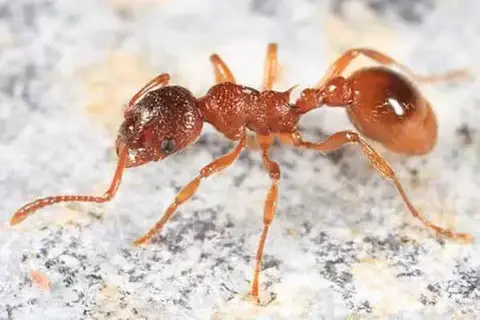
- BirdsHow And What Does Flamingo Eat?By Nolan Foster
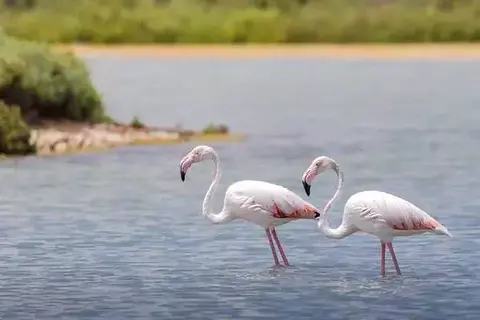
- WildlifeWhat Do Antelopes Eat?By Camilo Walker
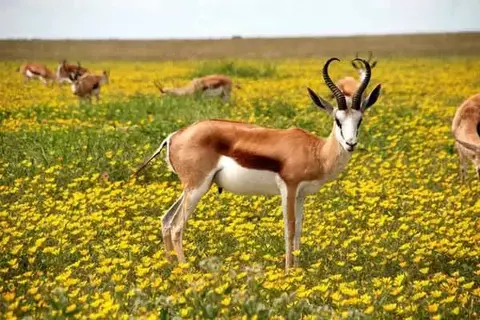
- Birds7 Interesting Facts About SeagullsBy Lucas Torres
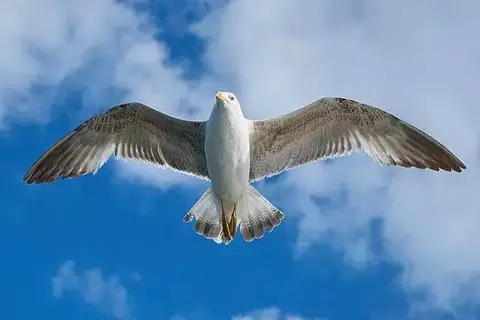
- Wildlife7 Interesting Facts About The JaguarBy Khai Dove
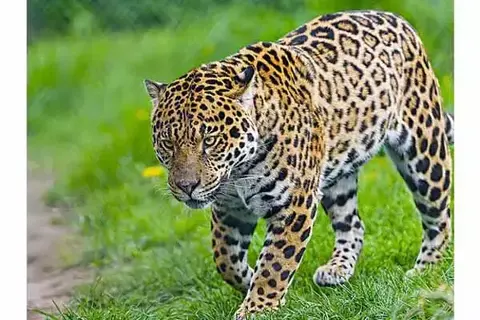
- BirdsWhat Does A Peacock Eat?By Nolan Foster
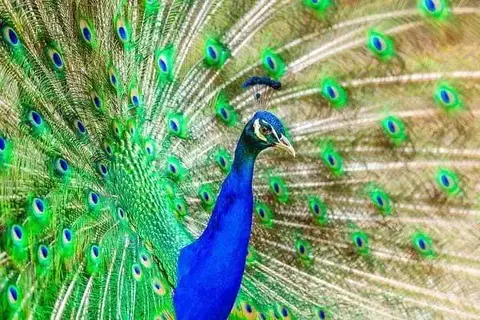
- DogsWhat Cat Food Is Best For Kittens?By Evelyn Star
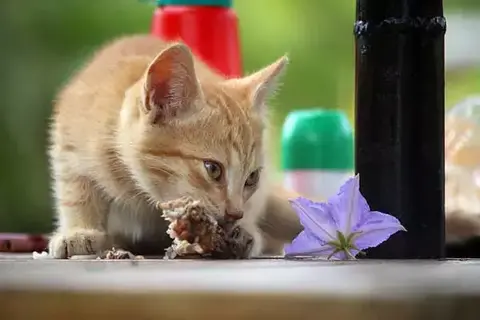
- RodentsWhat Do Hedgehogs Eat In The Wild And At Home?By Camilo Walker
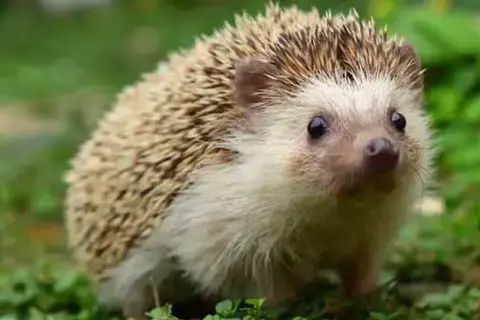
- BirdsWhich Hawk Is The Largest?By Khai Dove

- WildlifeCan A Lizard Swim?By Evelyn Star
